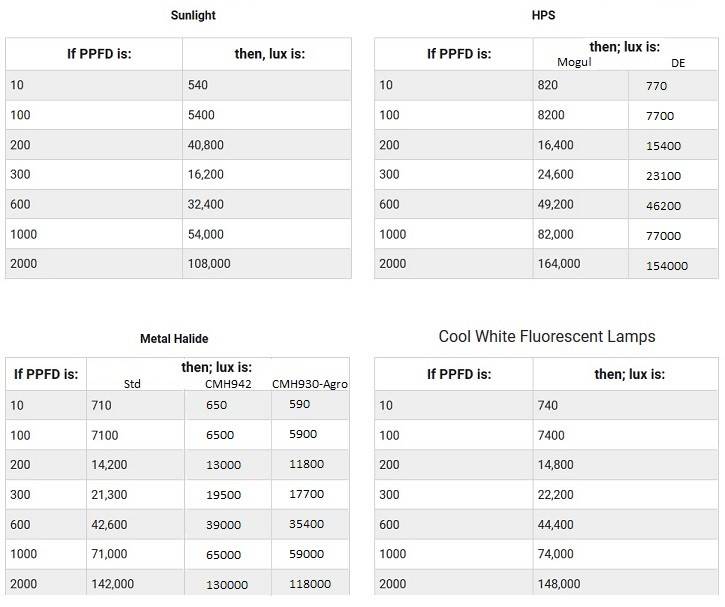I managed to get this together

It's a chart of different light types, and how a lux meter would read at different ppfd levels. I would very much like to put a ppfd and lux meter together under some leds to add to this information. Ideally, under Samsung LM301 led's at 3k, as they seem by far the most popular choice. Does anyone have both meters and these leds? Perhaps even a couple of lux meters to repeat the test. Then all 3k lm301 users can use a lux meter to measure ppfd.
I know people here have a ppfd meter and leds. Even if different leds, the figures would be useful.
Edit: Perhaps someone can also use their meters to confirm my charts accuracy. It's just some ripped information, not my own work
It's a chart of different light types, and how a lux meter would read at different ppfd levels. I would very much like to put a ppfd and lux meter together under some leds to add to this information. Ideally, under Samsung LM301 led's at 3k, as they seem by far the most popular choice. Does anyone have both meters and these leds? Perhaps even a couple of lux meters to repeat the test. Then all 3k lm301 users can use a lux meter to measure ppfd.
I know people here have a ppfd meter and leds. Even if different leds, the figures would be useful.
Edit: Perhaps someone can also use their meters to confirm my charts accuracy. It's just some ripped information, not my own work





